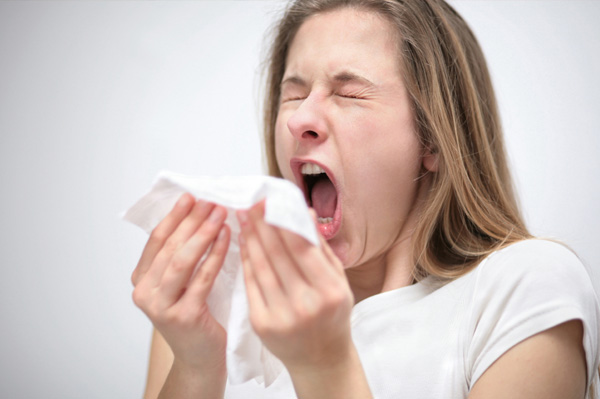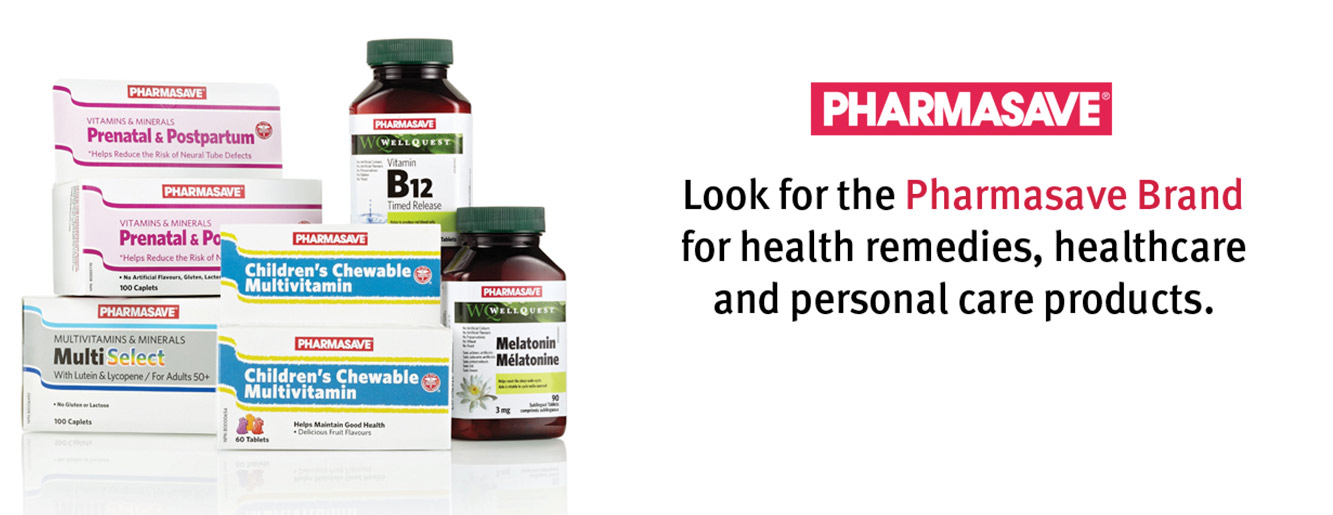
Allergic Rhinitis (Allergies
The Facts
Allergic rhinitis, also called hay fever or pollinosis, literally means “allergic nose inflammation,” where rhino means “to do with the nose” and the ending -itis simply refers to inflammation.
Allergic rhinitis can either be seasonal or year-round. In most people, an allergen – something that triggers an allergy – sets their symptoms off at about the same time each year. Spring attacks are usually due to tree pollen, while grass pollens dominate in the summer and weed pollens in the autumn. Most people with allergic rhinitis are sensitive to more than one allergen.
Perennial allergic rhinitis appears year-round. This condition is most common in people with allergies to allergens that are present all year. Naturally, people who are allergic to house dust mites or to their own pets tend to suffer no matter the season. Allergic rhinitis affects about 20% of Canadians.
Causes
Allergic rhinitis is an allergic condition like asthma, meaning that the body tends to overreact to certain types of outside substances. One way it overreacts is by producing antibodies that signal your immune system to release histamine and other chemicals. These chemicals cause the symptoms of allergic rhinitis including sneezing, runny nose, itchy or watery eyes, and even coughing.
Allergic rhinitis can be inherited, but you probably don’t inherit particular allergies, such as to cat dander or ragweed. Instead, you just inherit the tendency to be allergic. Children have a 30% to 60% chance of developing allergic rhinitis if one of their parents is affected and a 50% to 70% chance if both parents have allergic rhinitis.
Symptoms and Complications
Most people with allergic rhinitis know they have it, although it can sometimes be confused with the common cold.
Symptoms include runny nose; sneezing; itchy nose, mouth, throat, or eyes; and congestion. Other symptoms can also occur, such as tearing of the eyes, coughing, sore throat, wheezing, and headache.
You can usually tell seasonal allergic rhinitis from perennial rhinitis by the fact that it appears at the same time each year. Another difference is that, while seasonal allergic rhinitis often causes red eyes, perennial rhinitis tends to leave the eyes alone. Perennial rhinitis can also cause minor blockage of the ears, particularly in children.
Making the Diagnosis
The important thing to remember about allergic rhinitis is exactly when the symptoms appear and disappear. Knowing these dates will give your doctor or allergist vital clues as to what’s provoking the symptoms, which makes diagnosis easier.
By getting the details of where you live and work and when you suffer most, a doctor or an allergist can make a very short list of possible causes. Your doctor or allergist may suggest allergy testing.
Allergists perform a skin prick test by using small, standardized doses of all the most common allergens to narrow down the diagnosis. They test for allergy to a specific substance by gently scraping the skin with each of these until a small rash appears. The appearance of the rash confirms what you’re allergic to. Most of these tests are nearly painless. If none of the skin tests produce results, it’s probably some other kind of rhinitis.
These other conditions can be confused with allergic rhinitis:
- vasomotor rhinitis: The nasal mucous membrane swells up with increased blood flow, causing runny nose and congestion, but typically there is no itching. There’s no specific cause (i.e., people aren’t allergic to anything) although smoke, dry air, temperature change (such as coming in from the cold), and odours can trigger symptoms.
- chronic rhinitis: Prolonged symptoms of a common cold or another condition (e.g., low thyroid function).
- rhinitis medicamentosa: This is caused by overusing nasal spray decongestants, which actually may increase congestion if used for more than about 3 days. Cocaine users are also vulnerable to this form of rhinitis.
Treatment and Prevention
The best way to prevent allergic rhinitis is to avoid the allergen. This may mean changing your habits, or even giving away a pet or moving to another house if the symptoms are unbearable and don’t respond to medications.
If the allergen is something you can’t completely avoid, like dust mites, here are some steps you can take to make your home a haven:
- Remove furniture that collects dust (e.g., carpets, draperies, and stuffed chairs).
- If possible, use central air conditioning during high pollen and mould times.
- Put special dust mite covers on mattresses.
- Wash floors frequently with a wet mop.
- Reduce air humidity with a dehumidifier to maintain indoor humidity around 40% to 45%.
- Install a high-efficiency air filter called a HEPA filter.
- Use fungicide (e.g., equal parts household bleach and water) on sinks, shower stalls, vegetable storage areas, and garbage pails.
- Remove houseplants (a common source of mould).
- Stay indoors during high pollen times.
Keep in mind that it is not always possible to control the environment or to eliminate or avoid allergens, especially those that are airborne. Many people need medication treatment for relief. Fortunately, most people respond well to medications. The therapy of choice will depend on your symptoms, the severity of your symptoms, your past response to medications, and other medical conditions that you have, if any.
Treatment for mild symptoms is usually antihistamines taken orally (e.g., chlorpheniramine*, diphenhydramine, cetirizine, loratadine, fexofenadine, desloratadine), as a nose spray (e.g., levocabastine), or as an eye drop (e.g., olopatadine). Your doctor or pharmacist can help you choose the medication best suited to your needs. For example, many oral antihistamines are now “non-drowsy.” People with certain medical conditions (e.g., glaucoma, prostate problems) should consult their doctor before using certain antihistamines.
It is important to know that some products contain antihistamines plus decongestants for symptom relief. Again, seeking advice from a health professional is recommended as those with medical conditions such as high blood pressure and diabetes must use caution with these types of medications.
A corticosteroid nose spray (e.g., budesonide, ciclesonide, fluticasone, flunisolide, mometasone) can be tried if antihistamines aren’t working. Corticosteroid sprays can be used if rhinitis symptoms are chronic or if symptoms are moderate to severe. For seasonal allergies, some people may find that nasal sprays, eye drops, and inhalations containing sodium cromoglycate are effective in preventing allergic rhinitis if treatment is started before allergy season and used on a regular basis.
An anticholinergic nose spray (e.g., ipratropium) may also be used to help reduce runny nose symptoms. Another medication that may be tried when other medications have not worked or have not been tolerated is called montelukast. Saline nose sprays and lubricant eye drops may also help with nose and eye symptoms.
Women who are pregnant or breast-feeding should consult their doctor or pharmacist before beginning treatment for allergic rhinitis.
If allergen avoidance and medical treatment for allergic rhinitis aren’t effective, allergen immunotherapy may be an option. Allergen immunotherapy may be referred to as desensitization, hyposensitization, or simply as allergy shots. Small amounts of the allergen are injected regularly while slowly increasing the dosage. The hope is that the immune reaction becomes weaker and weaker as the body gets used to the presence of the allergen.
Allergy shots are initially given 1 or 2 times each week. After about 6 months of weekly shots, maintenance treatment is started. Maintenance shots are usually given just once each month. After 3 to 5 years, some people can stop getting shots.
Allergen immunotherapy isn’t risk-free. Rarely, the person may have a system-wide immune reaction called anaphylaxis, which can be fatal. People receiving allergen immunotherapy have to wait in the clinic with a physician present for half an hour after each shot in case there is a reaction. The best time to start desensitization is at the end of the annual allergic period.
*All medications have both common (generic) and brand names. The brand name is what a specific manufacturer calls the product (e.g., Tylenol®). The common name is the medical name for the medication (e.g., acetaminophen). A medication may have many brand names, but only one common name. This article lists medications by their common names. For more information on brand names, speak with your doctor or pharmacist.
All material © 1996-2012 MediResource Inc. Terms and conditions of use. The contents herein are for informational purposes only. Always seek the advice of your physician or other qualified health provider with any questions you may have regarding a medical condition.



